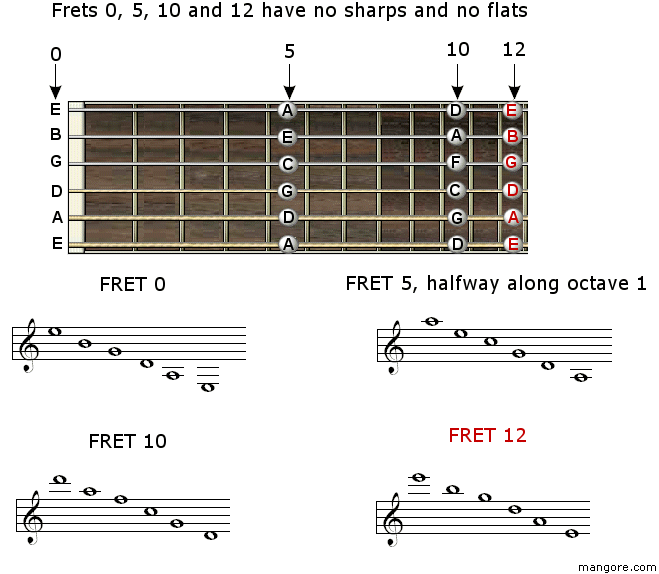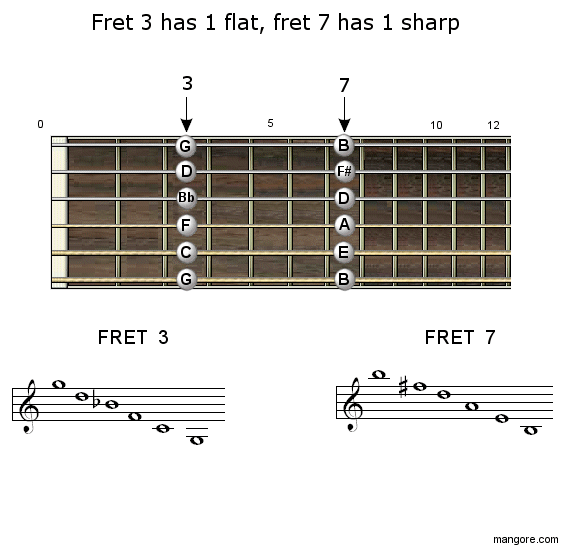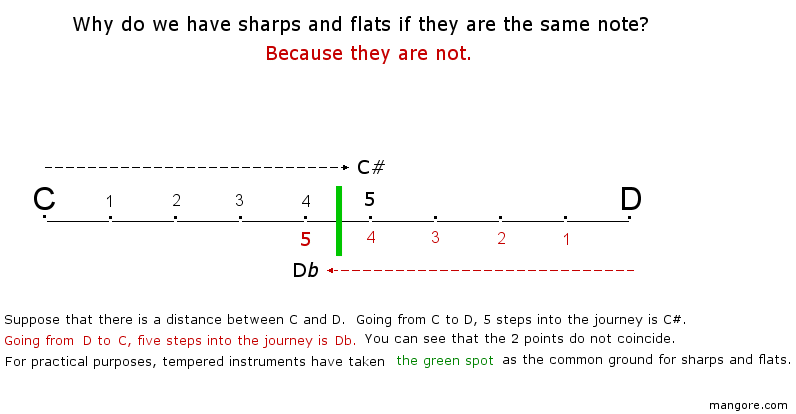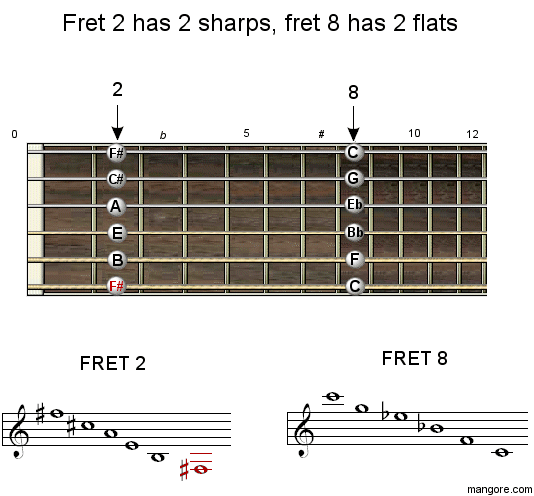Carlevaro Technique
The Fretboard
The guitarists wants to feel at home when he looks at the fingerboard. Once he has figured out what the names of the notes are, he is faced with the new challenge. Where are these notes located on the fingerboard? Another guitar challenge is that the same note can be found on different strings and at different heights on the fingerboard. Therefore, it becomes paramount to find a system or a combination of systems that will help us master our way around the frets. It helps to know that we are pressing string 5 on fret 10, but it really helps if we also know that we are pressing a G. This is true because during performance, we need all the references we can afford since these will get rid of a large percentage of the anxiety.
Points of Reference
Man has a natural ability for clearly and immediately perceiving items or divisions grouped in pairs.
The sector of the first octave (from fret 0 to fret 12) consists of 12 semi tonal divisions. To isolate each fret is a difficult task. If we think that the role of all the frets is equally important, the process of finding our way around the fretboard is even rendered more difficult.
If we assign different grades of importance to different frets, the problem would be partially resolved. Making translations will become easier and we will have total control.
I find 2 methods to help me immensely to acquire control. One is related with the position of the left hand on the fingerboard, and the other is related with the names of the notes I am dealing with.
The first helps me technically. The second musically, especially when I am reading from the score.
Method 1
Positions: Order of importance
1) Position I (basic point of reference).
2) Position V (halfway along the first octave).
3) Position VII.
4) Position III (equidistant between positions I and V).
Secondary Positions (derived from the above)
Position II (Fret I + 1).
Position IV (Fret III + 1).
Position VI (Fret V + 1).
Position VIII (Fret VII + 1).
The ninth position can be considered natural since the contact between the guitar body and the hand acts as a guide.
Position X requires a small forward movement of the arm. The same applies to the remaining positions of the transition sector, XI and XII but with a greater participation of the arm and body.
Position XIII belongs to the sector of the second octave and from here onwards (save for rare exceptions) the orientation relies on the amount of separation between the thumb and index finger.
This is one way to find our way around the fingerboard.
Method 2
This method has to do with learning where the notes are located on the fingerboard. Close observation of the fretboard will revel many interesting features. These will not only help fix the notes in our memory, but will also help us in grouping frets according to certain characteristics.


Whenever you have a flat, you can immediately make it into a sharp and vice versa. (i.e.: F# = Gb Still this is a convention in tempered instruments (instruments with frets and keys), originally, and physically, F# and its flat equivalent (and all the other equivalents), are actually 2 different notes. This explains why tempered instrument players in general need some time for their ear to adapt to non tempered instruments (i.e.: violin). I am building these tables to help memorize the place of notes on the fingerboard. Feel free to change a flat into a sharp and vice versa if this helps you memorize faster. This is how I memorized the fingerboard. String 1 and 6 will always have the same name note whenever the 6th string is tuned to E.


The continuation of this class is in the members area, become a member today.
 Back to Top
Back to Top



